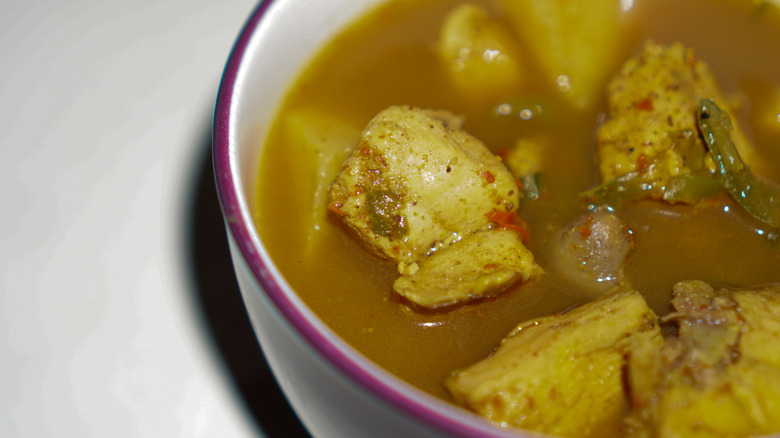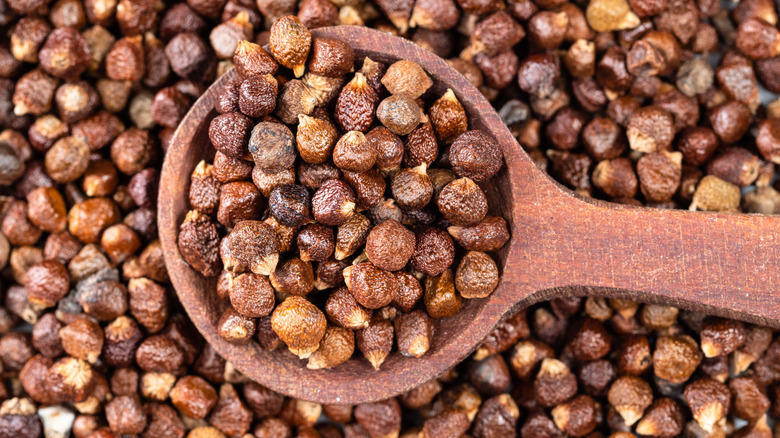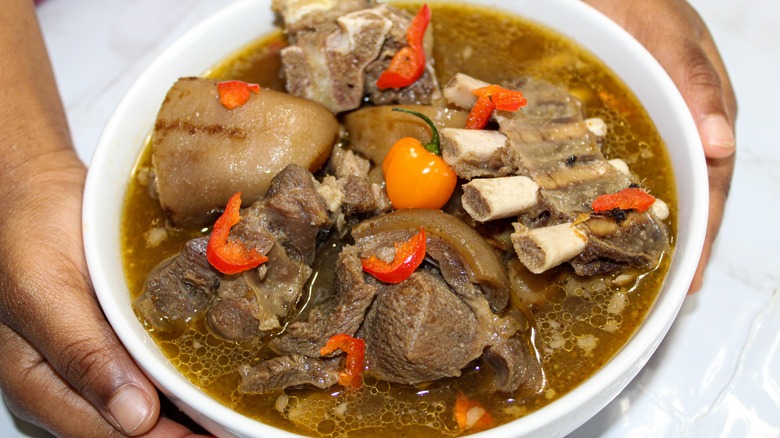Pepper Soup: The Spicy Nigerian Comfort Food You Should Know
Nigeria is a West African country known for its love of hot and spicy. According to Eater, Nigeria is one of the world's 12 most spicy cuisines. Jollof rice, of course, is a great entry into the West African food world, but it doesn't end there.
Akara is a popular street food in the country that is a delicious black bean fritter. The inside is light and fluffy and the exterior is satisfyingly crunchy from being deep-fried. You can find these on the streets of bustling Lagos or on the country's popular beaches. Suya is another spicy street food that is made of tender beef cooked over a charcoal grill. It draws crowds even in the hot sun.
Nigerian stews and soups are also incredibly complex and satisfying dishes to enjoy. If you're craving soup this fall season, making your own rendition of Nigerian pepper soup may be the way to go. This hearty, spicy, and deeply warming soup is sure to warm you up this autumn.
Brief history of Nigerian food
According to ATOD Magazine, Nigeria is a diverse country whose cuisine has been deeply influenced by years of colonization. Rice, couscous, potatoes, and poultry are typical components of modern Nigerian cuisine, as a direct influence by both the Portuguese and English. Indian cuisine has also had an influence on the country, and, as a result, has yielded many peppers and spices that are also used in Nigerian cooking.
However, Nigeria also has an abundance of both native and non-native plants that can grow as a result of their fertile soil near the Niger river. Tropical fruits, palm trees, cocoa, dates, and peanuts all grow prosperously here. Preferred ingredients in Nigerian diets also include various peppers, okra, pork, eggs, fish, and plantains. As for frequently consumed dishes, soups are a mainstay (via ATOD Magazine). The site writes, "In fact, soups are usually the dishes passed on from generation to generation. Among them are peanut soup, ogbono soup, owerri soup, and pepper soup."
Today, Pepper soup is "popular year-round, enjoyed across the country and served by street food vendors in bars and restaurants," according to Serious Eats. It is one of the most popular soups, not only in Nigeria but across Africa. It is even said to have medicinal qualities, and it is given to new mothers after birth as it is said to have a "cleansing" effect on the body (via Will Fly for Food).
Ingredients in pepper soup
While you may expect pepper to be the front-and-center ingredient in this dish, that's not the case. The soup has a complex flavor profile that highlights nutty, bitter, woodsy, and floral notes all in one soup, as described by Serious Eats.
Serious Eats notes the protein used in the dish is most commonly chicken. However, goat, cow, or fish-like tripe can also be used. It is also common to throw in offal to accompany the main protein, meaning non-muscular parts of the animal, such as the stomach, liver, and kidney, according to Britannica.
As far as seasonings go, it's quite a long list, according to Serious Eats. Erhe, uda, gbafilo, umilo, alligator pepper, and uziza are among the uniquely West African spices used in the dish. This combination is what gives the soups a complex and unique flavor profile that you would be hard-pressed to find in other dishes. However, according to My Diaspora Kitchen, these spices can frequently be bought together as a spice mix in many African stores or specialty groceries, so no need to memorize the list.
Herbs, like lemongrass, scent leaves, or parsley should also be thrown in for added aroma and flavor. Scent leaves, also known as African basil, are a sweet-smelling herb that are said to have some health benefits, as well (via Pharmapproach).
How pepper soup is made
This soup is a one-pot recipe, typical of many dishes from West Africa, and its process is similar to most homemade soups. To begin, it is important to toast the spices. Toasting spices is important as the heat will draw out oils from the spices that will produce a stronger flavor according to Bon Appétit. Serious Eats uses whole spices, so they will need to be ground after toasting, but if you're using a pre-made spice mix, you can skip this step.
The second step is simple: throw everything into a pot. The meats, water, herbs, and spices will all be boiled and then simmered together. When the meat is cooked fully, it can be brought off the heat. Herbs and spices can be added to taste at this point, and it is ready to serve.
Lola's Kitchen says this hot dish can be served with boiled potatoes, bread to sop up the broth, or simply as is.



